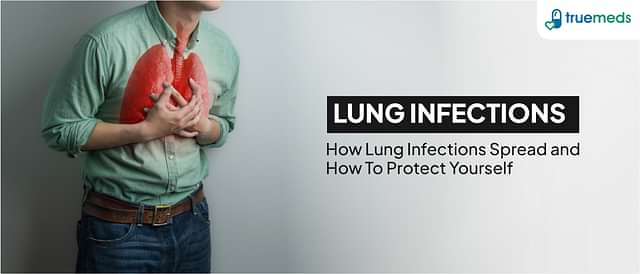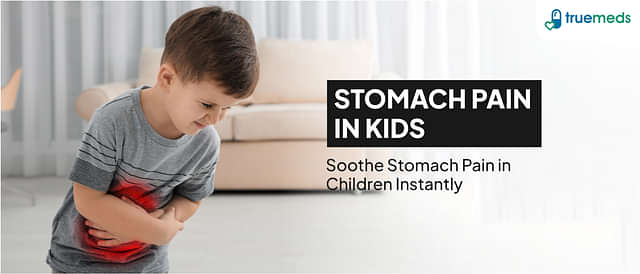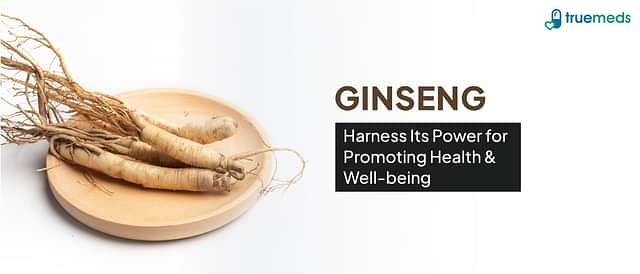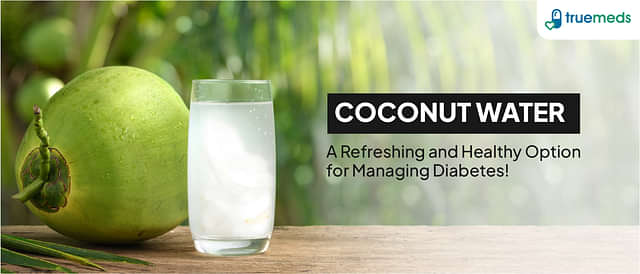Understanding COPD (Chronic Obstructive Pulmonary Disease) Causes, Symptoms, Treatment & Medications
Last updated on : 12 May, 2025
Read time : 11 min
Chronic obstructive pulmonary disease, or COPD, refers to a group of progressive diseases of the lungs. These diseases include emphysema (shortness of breath) and chronic bronchitis (swelling and irritation in bronchial tubes). The prolonged exposure to harmful particles and gases, particularly cigarette smoking, causes chronic lung inflammation and interferes with their normal functioning. Besides, prolonged exposure to air pollutants at home or the workplace, genetic factors, and respiratory infections can also trigger these conditions of COPD. These factors cause airflow blockage in the lungs, tissue destruction, and severe breathing problems.
COPD Symptoms

The most common noticeable symptom of COPD is shortness of breath. The symptoms may be mild initially and may become severe if left untreated.
Chronic Obstructive Pulmonary Disease symptoms at the initial stage include:
- Frequent coughing at the initial stage
- Occasional shortness of breath after a physical activity
- Needing to clear throat, especially after waking up
COPD symptoms at a later stage include:
- Wheezing, a high pitch noisy breathing
- Excessive phlegm, mucus, or sputum production
- Tighten chest
- Trouble taking a deep breath
- Shortness of breath even after a light physical activity
- Chronic cough with or without mucus
Chronic Obstructive Pulmonary Disease symptoms at the final stage include:
- Fatigue
- Swelling of ankle, legs, and feet
- Weight loss without any effort
Read more– COPD Stages
COPD Causes
COPD is primarily caused by long-term exposure to irritants that damage the lungs and airways. Smoking is the most common cause, but other factors can also contribute.
- Smoking or Tobacco Use: Prolonged smoking of cigarettes, cigars, hookahs, or pipes is the leading cause of COPD.
- Environmental Exposure: Long-term exposure to air pollutants, dust, or harmful gases at home or the workplace increases the risk.
- Genetic Factors: A rare genetic disorder called alpha-1 antitrypsin deficiency (AATD) can cause lung damage, leading to COPD.
Risk Factors of COPD
Chronic Obstructive Pulmonary Disease (COPD) risk increases with exposure to irritants that damage the lungs. Smoking is the main cause, but other factors can contribute.
- Smoking
- Long-term exposure to air pollution or dust
- Workplace exposure to chemicals or fumes
- Family history of COPD
- Frequent respiratory infections during childhood
Complications of COPD
COPD can lead to serious health problems that affect quality of life. Managing COPD early can help avoid complications.
- Frequent lung infections (like pneumonia)
- Heart problems (e.g., heart failure)
- Lung cancer risk
- Low oxygen levels causing fatigue
- Depression or anxiety from difficulty breathing
Diagnosis of COPD
Diagnosing COPD involves checking symptoms, medical history, and lung function. Early diagnosis is crucial for better treatment.
- Spirometry test to measure lung function
- Chest X-rays or CT scans to check lung damage
- Blood tests to rule out other conditions
- Pulse oximetry to check oxygen levels
COPD Treatment
Chronic obstructive pulmonary disease treatment can ease symptoms, prevent severity, and slow disease progression. You may consult a lung specialist or pulmonologist, and respiratory therapist to get COPD treated. The treatment options available for COPD are listed below:
1. Oxygen Therapy
COPD can block your airways, and your oxygen levels may drop. You may use an oxygen mask and concentrators at home to fulfil oxygen levels in your body.
2. Medications
COPD treatment medications aim to reduce symptoms and reduce COPD breakouts. Finding the medication and dosage that works best for you may take some time. The medicines available for COPD are:
a) Inhaled Bronchodilators
Inhaled bronchodilators help to relax the muscles of the airways. There are two types:
- Short-acting bronchodilators
These COPD medications are taken through an inhaler. They act quickly to relax the muscles in your airways and relieve coughing and shortness of breath. The effect of short-acting bronchodilators lasts about 4 to 6 hours. The list of Short-acting bronchodilators available are:
- Albuterol
- Ipratropium
- Ipratropium bromide and albuterol
- Levalbuterol
2. Long-Acting Bronchodilators
These COPD medications relax the muscles in your airways for up to 12 hours. The list of long-acting bronchodilators available are:
- Aclidinium
- Arformoterol
- Formoterol
- Indacaterol (Arcapta)
- Salmeterol
- Tiotropium
b) Corticosteroids
Corticosteroids are also taken through inhalers. These COPD medications are effective in quickly reducing inflammation in bronchial tubes. The list of corticosteroids available are:
- Budesonide
- Fluticasone
Some medicines include both bronchodilators and inhaled steroids. These include:
- Budesonide and formoterol
- Fluticasone and salmeterol
c) Phosphodiesterase-4 Inhibitors
This COPD medicine also reduces swelling, opens airways, and makes breathing easier. The most common phosphodiesterase-4 inhibitor includes roflumilast.
d) Theophylline
This COPD medicine works like a bronchodilator and is cost-effective. It is available as a pill and helps your lungs work better. However, this medicine is inefficient in managing all COPD symptoms.
e) Antibiotics and Antivirals
Antibiotics can kill the bacteria and treat the infection. It can prevent COPD symptoms from getting severe by infection.
f) Vaccinations
You can also get yourself vaccinated to reduce the number of COPD outbreaks. However, you must seek medical guidance before getting a pneumonia vaccine.
3. Surgery
Your doctor will recommend surgery only if none of the above treatment options work. In that, you might get surgical treatment to relieve CPOD symptoms. The surgeries done for COPD are:
- Bullectomy: Bullectomy is the surgical removal of abnormal air spaces called bullae from the lungs. This eventually improves the flow of air in your lungs.
- Lung volume reduction surgery: The surgery involves the removal of damaged lung tissue. Removing the damaged tissue allows the healthy parts of your lungs to expand so they can take in more oxygen.
- Lung transplantation: Lung transplantation for COPD is rare. It is only done if you have severe lung damage. Your doctor can replace your damaged lung with a healthy one from a donor. High risks follow this surgery, and you’ll have to depend on medications for life.
Lifestyle Changes to Improve COPD
COPD management can be done by making a few alterations in your lifestyle and eating habits. These changes include:
1. Quit Smoking
Quitting smoking is the most effective remedy to slow the progression of COPD symptoms. You can always seek medical help to explore ways of quitting smoking.
2. Improve Air Quality in the Home
You can improve the quality of air at your home by:
- Using air filtration systems
- Good Ventilation to clear the indoor air
- Using a face mask while dusting or cleaning activities
- Avoid inhaling fragrances or chemical fumes directly
3. Practice Breathing Exercises
Practising breathing exercises can help improve your breathing while doing physical activities. Here are a few breathing exercises you can practice to improve your breathing ability:
- Pursed-lip breathing: In this breathing exercise, you need to inhale through the nose and exhale through the mouth at a slow controlled pace. This practice allows you to control oxygenation and ventilation.
- Diaphragm breathing: In this breathing practice, you need to sit or lie comfortably and inhale through the nose for 4 seconds, allowing your abdomen to expand, followed by a very slow controlled exhale for about 6 seconds. This practice improves the activity of the respiratory muscles of the ribcage and also reduces the time of movement of the thoracic diaphragm during breathing.
- Pranayama: It is a common yoga practice that involves controlling your breathing in various styles and lengths. One effective technique is bhramari pranayama.
4. Manage stress Levels
Anxiety and depression may also trigger COPD. Therefore, it’s recommended to manage your stress levels by following stress management techniques. These techniques involve exercise, yoga, meditation, following a hobby, having a healthy diet, and socialising.
5. Maintain a Healthy Weight
If you are underweight, you are more susceptible to breathing problems than an overweight person. Underweights are more likely to show weak breathing muscles and reduced lung capacity. Therefore, maintaining a healthy weight is recommended to improve your breathing ability.
6. Muscle Training
You can improve your muscle strength by following practices:
- Interval training: This training includes practising high and low-intensity exercises at intervals.
- Strength training: This training includes using weights, resistance bands, or your body weight to build muscles and improve your breathing ability.
7. Water-Based Exercises
Indulging in Swimming and water aerobics can be the best practice to keep your lungs and heart parameters in order.
8. Vitamin D
Vitamin D levels above 30 – 40 ng/mL in your body may reduce the risk of COPD outbreak and simultaneously improve inflammation in bronchial tubes.
9. Co-enzyme Q10 and Creatine
Combining Co-enzyme Q10 and creatine can also improve exercise tolerance and breathing ability, prevent COPD outbreaks and improve the overall quality of life.
10. Eucalyptus Oil
Inhaling the vapours of boiling water with added eucalyptus oil can help open airways, reduce inflammation in bronchial tubes, reduce mucus production and help clear mucus from the lungs.
11. Myrtol Standardised
Myrtol standardised, an essential oil derived from pine, lime, and eucalyptus, is also used effectively to treat acute and chronic bronchitis, sinusitis, and COPD.
Prevention of COPD
Preventing COPD involves avoiding lung irritants and adopting healthy habits. Early prevention reduces long-term lung damage.
- Quit smoking or avoid secondhand smoke
- Use masks to limit exposure to dust or chemicals
- Reduce indoor and outdoor air pollution
- Get vaccinated against flu and pneumonia
- Maintain regular health checkups
When to See a Doctor?
You need immediate medical attention in case you experience:
- If oxygen levels are low, and you are out of breath
- You are coughing more than usual
- If you experience dizziness
- Your fever exceeds 101 F
Conclusion
Chronic obstructive pulmonary disease (COPD) is a common and treatable disease of the lungs characterised by restricted airflow and tissue damage in the lungs. It results in structural lung changes due to chronic inflammation from prolonged exposure to harmful particles or gases, especially in cigarette smoke. It can be treated with certain medications, including Inhaled bronchodilators, Corticosteroids, Phosphodiesterase-4 inhibitors, Theophylline, antibiotics, and antivirals. Besides, COPD symptoms can also be managed with lifestyle changes, including quitting smoking, managing stress levels, maintaining a healthy weight, muscle training, taking sufficient Vitamin D, and intake of a balanced meal.
Get your generic and branded medicines for COPD by uploading your prescription on Truemeds and avail yourself of a free teleconsultation from our expert doctors on our online pharmacy – Truemeds. You can also download our Truemeds app. Also, save up to 72% on your medicine purchase by choosing the best alternative, as Truemed’s expert doctors advised.
Frequently Asked Questions (FAQs)
Both asthma and COPD have similar symptoms but different triggers. While COPD is chronic and progressive and triggered by smoking, asthma is triggered by allergens. If you have both conditions, starting treatment on time is better.
People above the age of 65, women, those exposed to chemicals and pollutants at the workplace, and people who smoke excessively are at high risk of COPD.
If you are feeling shortness of breath or experiencing a severe outbreak of symptoms, you should immediately seek medical help.
Quitting smoking and having a healthy lifestyle is the best way to avoid COPD.
You should use an oxygen concentrator and seek medical help immediately to recover your oxygen levels.
Trelegy Ellipta (fluticasone furoate/umeclidinium/vilanterol) is the new first once-daily single-inhaler triple therapy (SITT) launched by GlaxoSmithKline Pharmaceuticals in India for COPD patients.
COPD is treatable by practising breathing and muscle exercises such as Pursed-lip breathing, diaphragm breathing, pranayama, interval, and strength training.
Disclaimer: The information given in this article is true to our best knowledge. Still, we recommend that you consult your healthcare professional before using any medication for COPD mentioned in this article.
Disclaimer
Our healthcare experts have carefully reviewed and compiled the information presented here to ensure accuracy and trustworthiness. It is important to note that this information serves as a general overview of the topic and is for informational purposes only. It is not intended to diagnose, prevent, or cure any health problem. This page does not establish a doctor-patient relationship, nor does it replace the advice or consultation of a registered medical practitioner. We recommend seeking guidance from your registered medical practitioner for any questions or concerns regarding your medical condition.
Popular Articles
Recent Articles
Top-Selling Medicines:
...View more
Top-Selling OTC:
...View more
Company
About UsHealth ArticleHealth StoriesDiseases & Health ConditionsAyurvedaAll MedicinesAll BrandsNeed HelpFAQSubscribe
Registered Office Address
Grievance Officer
Download Truemeds

Contact Us
Our customer representative team is available 7 days a week from 9 am - 9 pm.
v3.8.7
2025 - Truemeds | All rights reserved. Our content is for informational purposes only. See additional information.
Our Payment Partners









































